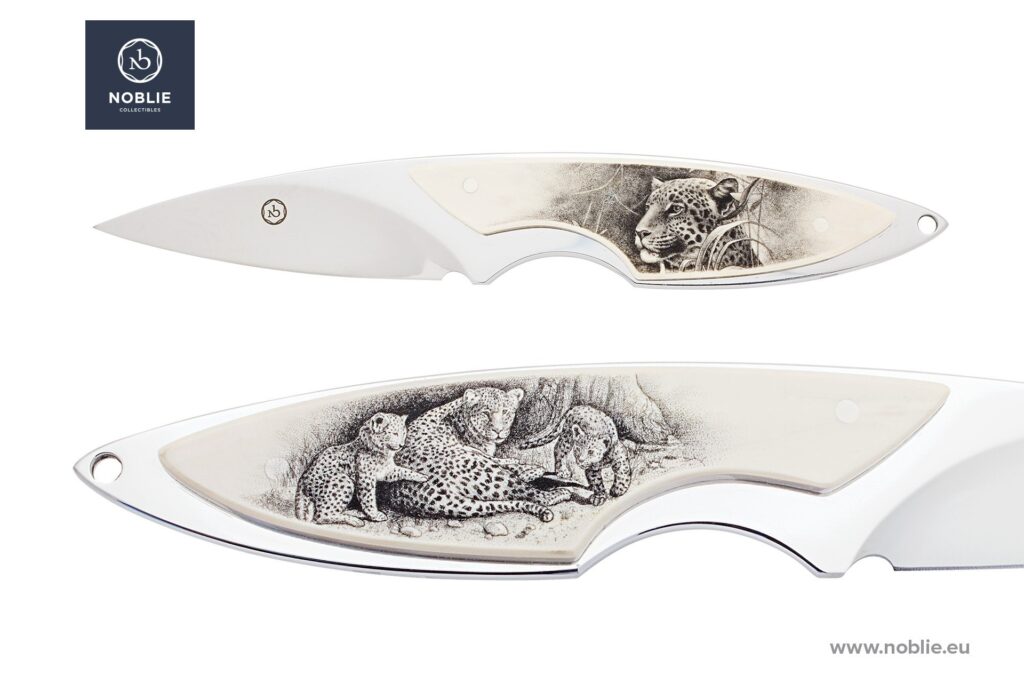Modern blades are made of high-quality steel, but nevertheless, over time, any metal is corroded. It is necessary to periodically lubricate the connecting elements and springs of the pocket custom knife with one or two drops of oil to ensure its easier opening and closing, which will reduce wear and prevent rusting. After that, it is necessary to dry the blade and wipe it with a cloth soaked in oil. This is especially useful if you live near the sea or in a region with humid air. When the blade gets wet, it should always be wiped, and if the product gets into salt water or some liquid whose properties you do not know, handmade knife blade should be immediately rinsed in running water, wiped dry and lightly smeared with an oil composition.
You can not store the blade in a case. Moisture accumulates in the skin it is the cause of the appearance of corrosive “ulcers” on the blade.
Do not forget to check the operation of the butt lock, the locking mechanism – “lockback”. Avoid getting grains of sand and sawdust there. Keep all the mechanisms clean. Also be sure to check the correct addition of your folder.

It is not necessary to use the blade for opening cans or as a screwdriver, crowbar, cutter, as well as for any other purposes for which it is not intended. The use of a foot head instead of a hammer often leads to breakage of the spring, handle or rivet.
It is necessary to rub the wooden handles with oil from time to time. Copper can be polished with a conventional polish for this metal.
It is necessary to sharpen the blade regularly, since a blunt blade is sometimes much more dangerous than a sharpened one.
Any caring and responsible owner of blades should know the main rules of their care. Products maintained in good condition, of course, will last much longer. The term “knife care” implies not only a simple correct sharpening.
Getting rid of rust
Rust is rightfully considered the worst enemy of any blade. And do not think that this attack is not terrible for stainless steel. And such resistant steel can rust, even if you comply with all the conditions of use and storage.
Those living near the sea should be given more time to care. Apply a small layer of oil to the blade when storing the product, because the air of the coast is more humid and there is a little salt in it. It will not allow moisture to enter into a chemical reaction with steel. You can use a technical composition for lubrication, which is used by mechanics. If the custom made knife gets into the salty sea, wash it as soon as possible in running water, then oil it.
Stainless steel products with the addition of special components are not so much affected by liquid and oxidation. Old knives made of carbon steel are more sensitive to environmental factors and require close attention. You will be able to achieve better performance, as well as a longer service life of the blade with regular maintenance.
Often the metal of the product darkens – it becomes blue, gray, black. This is due to oxidation. Also, darkening appears before rusting. For ordinary steel, this is a frequent occurrence. Regular cleaning will help stop the appearance of rust in areas with patina. Stainless steel darkens less often than ordinary steel. The appearance of a patina indicates the imminent formation of rust, so you need to get rid of it immediately.
Cleaning process
The knife must be thoroughly cleaned and dried after use. This also applies to products made of corrosion-resistant stainless steel, which are also exposed to long-term environmental factors that cause oxidation. Clean out all foreign particles from folding models, in particular from the locking mechanism.
Solvent, alcohol, methyl ethyl ketone and other means can be used for cleaning. Be careful with acetone, nail polish remover, white gasoline and brake fluid, they can spoil some materials used in the manufacture of handles.
Do not use strong chlorine-containing cleaning agents that accelerate the corrosion of steel, for example, dishwashing powders.
Avoid prolonged immersion in liquids (solvents, water, etc.). This will cause damage not only to metal elements, but also to handles made of wood and other porous materials. Before cutting food, clean the blade with alcohol or rinse it in hot soapy water and rinse thoroughly. Do not forget to clean and lubricate the product at the end of the work.
How to properly lubricate a folding knife
Use oil to lubricate the axial rod, a few drops in the area around it will be enough. When lubricating models with the “liner-lock” mechanism, it is necessary to drip directly onto the axle. Then close and open the knife several times so that the oil gets deeper. If necessary, you can add a couple more drops.
The technique of lubricating products with a “lock-back” mechanism, as well as slip joints, is slightly different. The oil must be dripped onto the shank, where the pull spring comes into contact with it during the opening and closing of the knife. For best results, pull out the blade perpendicular to the handle. Then drip directly onto the shank and open and close the knife several times. To ensure the reliable and long-term functioning of this item, its lubrication must be carried out regularly.

